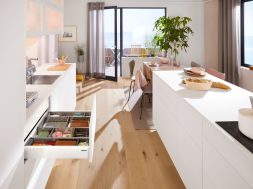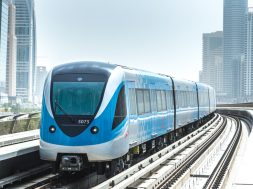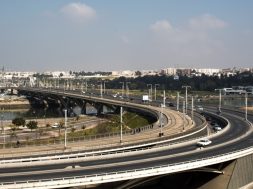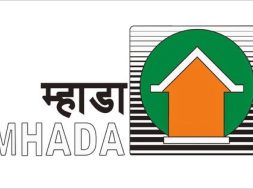‘Going Green’ seems to be the new buzz word, with everyone from property developers, product manufactures and even the fashion industry having embraced the new revolution of eco sensitive and earth conscious society. According to green building consultant Dhruv Futnani, “Being genuinely responsible towards our Mother Earth is not only our Dharma but also shows our commitment to future generations”
Green Buildings in Growing IndiaThe reality of the energy crisis that India is heading toward in the coming years stems from unbridled growth with little or no emphasis on the impact it has on our environment and ability to sustain future generations with our limited non-renewable resources. The building and construction industry has a major role to play in this precarious situation, since 30-35 per cent of energy produced in the country is used to construct and operate our homes, factories and offices. Also, the waste generated by our buildings result in unsightly and dangerous dumping grounds called landfills, which have become common in all cities.
The rapid economic growth in India has increased the demand for commercial space for offices, shopping malls and other activities. Typically these buildings are air-conditioned and energy intensive. With staggering growth from 659 million square metres currently to an estimated 1900 million square metres in 2030, it is imperative that these new buildings follow green building practices and the existing building stock is upgraded.
Our lifestyle has been changing rapidly, with more time spent in an indoor environment which is typically air-conditioned. It becomes very important to address the issues of healthy buildings as it has a major impact on the health of occupants. Countless studies have been done to show the benefits of health and productivity improvement in buildings which have adequate daylight and ventilation
“Green Building” is a term used to describe buildings in which the above mentioned issues of energy conservation, water efficiency, waste management and healthy indoor environments have been addressed. Green Buildings can be achieved through an integrated design approach through all the stakeholders in a project, namely, owner, architect, MEP consultants, PMC and contractors. Modern building technology and design tools have greatly improved which gives designers a great opportunity to design and construct buildings which can reduce energy consumption by 30 per cent, optimise water usage by 40 per cent and buildings which are healthy to live and work in. Materials like insulation, high performance glass and efficient & intelligent air conditioning and lighting systems can be simulated and return on investments (ROI) can be validated before any work has begun on site. Green by Design & ConstructionWhen a project is being developed from scratch, the opportunity to incorporate green building principles at the conceptual & schematic design stages and this facilitates better quality of design and incremental costs could be reduced or even negated. Computer simulation tools and analysis assists the design team. An integrated effort of the entire team results in an optimised design to meet and exceed international standards for thermal comfort, building materials and indoor environment.
The construction stage plays an important role in the green building concept, and practices like protection of top soil, construction waste management, the protection of building materials and reduced site disturbance. New materials which are tested to be free/low from harmful chemicals, called volatile organic compounds are also specified in green buildings.
For existing commercial buildings, the process of upgrading building elements (wall, roof & glazing), air conditioning and lighting can happen stage-wise during renovation. Computer simulation is once again a vital tool to optimise the design and select appropriate materials to maximise savings. It is also essential to consider modernisation of the building on a regular basis, since there are many energy conservation strategies available, which do not require any major renovation. Some strategies like incorporating daylight sensors in peripheral spaces or occupancy sensors in non-regularly occupied spaces can have great savings. Similarly, under-deck insulation, roof gardens and reflective coatings all reduce heat gain through the roof and result in energy savings in operations.
Role of Green Building ConsultantThe green building consultant is the leader of the sustainable design efforts in the project, and major role in the project includes:• Integrating the efforts of various consultants on the project to create an integrated design solution for the project• Suggest the various green building strategies for the project based on building type, usage, climate of site and available materials• Conduct various simulations for solar, energy and daylight to ensure the project meets and exceeds the standards prescribed by ASHRAE, NBC etc.• Payback calculations to ensure the economic viability of strategies• Feasibility for achievable Green Building rating and to prepare the required documentation for certification. Computer Simulation in Green Building Design ProcessSolar Analysis: To determine incident solar radiation on the various surfaces of the buildings. The simulation is site location specific to inform and guide designers to applicable green strategies like massing, orientation, glazing extents, shading and green roofs.
Daylight Analysis: This analysis determines the daylight intensity in spaces and helps the design team to size and orient glazing, operable windows and also determine glass specifications such that all spaces meet requirements for natural daylight. Daylight analysis along with energy modeling helps to optimise glazing areas and glass specifications for optimum daylight and energy savings.
ElectricitykWh (x000)
Natural GasBtu
SteamBtu
Chilled WaterBtu
Space Cool 940.0
–
–
–
–
Heat Reject
–
–
–
–
Refrigerator
–
–
–
–
Space Heat
–
–
–
–
HP Supp.
–
–
–
–
Hot Water
–
–
–
–
Vent. Fans
547.4
–
–
–
Pumps & Aux.
–
–
–
–
Ext. Usage
53.0
–
–
–
Misc. Equip.
478.1
–
–
–
Task Light
–
–
–
–
Area Light
473.1
–
–
–
Total
24,91.6
–
–
–
Energy Modeling: This analysis determines the annual energy consumption based on architectural design, material specifications, lighting systems and HVAC systems. Analysis is done compared to baseline building and appropriate energy conservation measures are suggested with payback calculations are done. Different options for walls, roof and glass can be simulated and results analysed. HVAC and lighting can also be optimised for maximum savings.
Green Ratings for BuildingsOver the last few years, green building rating systems and guidelines have been created and have become a framework for sustainable practices. The LEED and GRIHA ratings are widely accepted benchmarks for green buildings and additionally help in marketing and branding the projects. These rating systems address issues related to site, water efficiency, energy savings, materials and resources, indoor environmental quality and innovation. Points can be scored when the requirements of the credits are completed and documented appropriately. The ratings come in various levels, like Silver, Gold & Platinum or 3 – 5 stars to recognise levels of achievement in sustainable practices.
Baseline
Clear Glass
ST 136 Double Glazing
KT 140 Double Glazing
Cooling
968.9
1013.1
917.1
915.5
Fans
577.2
690.5
547.8
54 1.1
Equipment
478.1
478.1
478.1
478.1
Ext Light
53.0
53.0
53.0
53.0
Lighting
473. 1
473. 1
473. 1
473. 1
Total
2550.3
2707.8
2469.1
2460.8
Savings
6.2%
3.2%
3.5%
The Bureau of Energy Efficiency (BEE) has conducted numerous case studies and documented buildings and published data showing that a typical green building consumes 40-45 per cent less energy (258 vs 141 kWh /m2 / year) than conventional buildings. These savings attracts business to build green offices or lease space which conforms to the green standards. The intangible benefits with such buildings also include a better indoor environment (daylight and fresh air) resulting in higher productivity and less building related sickness of employees.
Operations & Maintenance of Green BuildingsOne of the most critical stages of any green building would be the operations and maintenance. The greatest benefit of a green building is operational savings and hence the onus falls on the Facilities Manager to operate and maintain the building to realise the calculated savings. Certain environmental policies and operation procedures need to be formulated and followed from day one like recycling, regular measurement and verification of systems and appliances done to compare and relate the calculated energy & water consumption to actual and take action in the case of deviances.
Environmentally responsible management also extends beyond building management and should include policy making in terms of policies related to purchasing commodities and housekeeping.
ConclusionGreen buildings make business sense with a triple bottom line of environmental, economic and social. The green movement signifies the building and construction industry’s commitment to the environment and addresses the growing demand from the commercial, residential and industrial sectors.
The process to ‘Go Green’ requires an integrated and knowledgeable effort from the team and the green building consultant can ensure the client’s targets can be achieved.
Dhruv Futnani is a Green Building Consultant, with an M. ARCH (USA), LEED AP, IGBC AP and has completed various LEED Platinum rated buildings in India and USA. He has worked in the field of green buildings over the last 7 years doing facilitation and energy modeling. Dhruv is the Managing Director at Green by Dhruv Futnani, a firm specialising in green consultancy. The firm also provides full LEED & IGBC certification services and undertakes all 3 components of Green i.e. Facilitation, Energy Modeling, and Commissioning to make the process of green simple for the team at an affordable cost.
Cookie Consent
We use cookies to personalize your experience. By continuing to visit this website you agree to our Terms & Conditions, Privacy Policy and Cookie Policy.









